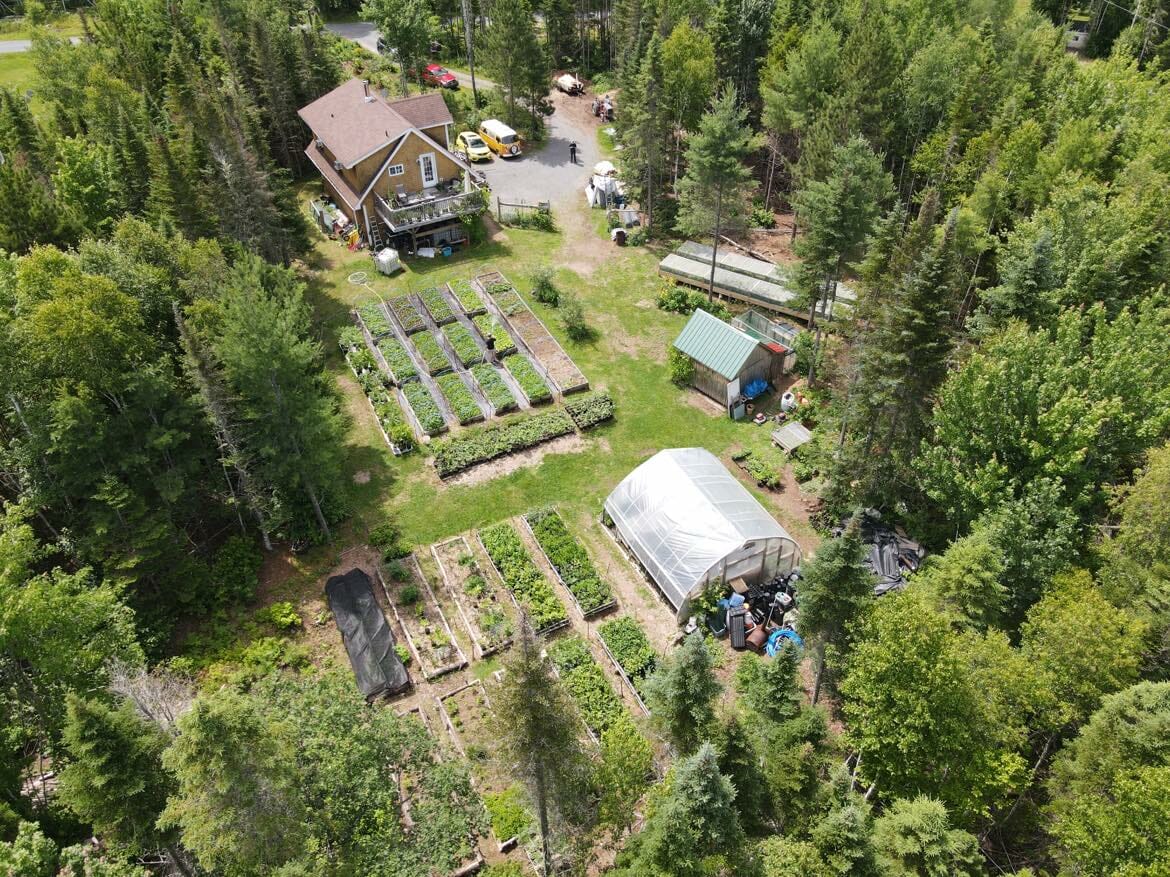Below the Canopy with Jesse Saindon: Native Seeds to Thriving Forests
By Monica Allaby, Posted on October 2, 2022
On just five acres of land, Jesse Saindon is growing a unique mix of native hardwood trees, including bur oak: an ecologically and culturally significant tree species.
In September, Community Forests International launched Below the Canopy, a podcast that explores the relationships between people and forests—with a focus on the Wabanaki forest. Our host, Megan de Graaf, has interviewed inspiring guests on topics such as Wabanaki forest management, the connections between Indigenous languages and ecosystems, and two-eyed seeing.
In our latest episode, Megan spoke to Jesse Saindon, the owner of Liberty Tree Nursery in Beaver Dam, New Brunswick. Jesse grows a unique mix of hardwood trees native to the Wabanaki forest. Jesse explains what inspired him to open Liberty Tree Nursery, his process for collecting locally-adapted seeds, and his motivations for growing bur oak—an ecologically and culturally significant tree species that is now rare in New Brunswick.
On the podcast, Jesse describes the importance of bur oak to Megan.
Megan: Can you tell us a little bit more about what’s so special about bur oak and where they grow? Tell us a little bit about their range here.
Jesse: In New Brunswick specifically, they have a very small range, which it’s pretty much limited to the lower St. John river valley. Our particular population of bur oak in New Brunswick is very separated from the main range, which is from, I think Saskatchewan down to Texas and over, across to New York state—western New York state, something like that.
And then really there’s just a couple little disjunct pockets of the population. So, there’s one here in New Brunswick and there’s one in central Maine. And then I think a few in Massachusetts, New Hampshire, but really these are just like tiny little pockets of bur oak.
But the big range is really in central North America. We’re at the far northeastern end of the range. And I think that’s very special because if you just go over to Cambridge-Narrows—somewhere over there in New Brunswick—somewhere over there is the most northeastern natural bur oak in North America. That’s really cool to me.

Jesse poses with bur oak seedlings in a greenhouse at Liberty Tree Nursery.
Megan: Can you tell us a little bit more about bur oak as a tree? Because I suspect a number of people who will listen to this podcast maybe aren’t familiar with bur oaks.
Jesse: The scientific name for bur is quercus macrocarpa, which means an oak with big fruits. Ironically in New Brunswick, it doesn’t actually really have big acorns. When you get down into Missouri and Kansas, you tend to find ones that are just massive. They’re the biggest acorns in north America.
But in New Brunswick for whatever reason, I don’t know if it’s because of the climate, they just don’t get as big. So that’s not the best description of bur oak in New Brunswick.
So, bur oaks are in the white oak group. Red oaks in eastern North America, those are in the red oak group. There are some slight differences between them. Bur oak grow their acorns in one year whereas red oaks take two years to fully develop an acorn.
As a tree, it lives a long time. So, some of the big trees we have in New Brunswick are 200-300 years old. I don’t know exactly how old they are, but they’re some of the biggest trees in the province if you can get out and see them. And they’re just sturdy, they look kind of like haunted house trees, just because they’re so massive.
And they’re great habitat for wildlife. They provide a lot of food for bluejays, squirrels, and deer.

Jesse Saindon grows a special mix of native hardwood trees on his 5-acre property in Beaver Dam, New Brunswick.
Megan: Do you know why it’s so rare in New Brunswick today? Why is it that we have a population here and this is kind of it for New Brunswick or for many kilometres?
Jesse: I’m not sure why it’s so separated. There’s a pretty good theory that First Nations people and their ancestors brought them here along the trading routes because it does line up pretty well with those historic routes, like the travel routes, because the next population is in Maine where people would’ve stopped over when they were travelling.
The reason why it’s so rare is just because they all got cut down. Because bur oak tend to like living—in New Brunswick anyways—in the flood plains and in flood plain adjacent areas—exactly where people developed farms when Europeans came, first starting with the Acadians and then the Loyalists after that, all those areas in the lower St. John river valley got turned into farmland and then a lot of them were cut down for firewood. And they also had a lot of uses like as barrels and shipbuilding material and stuff like that. So, a lot of them got cut down and it’s not really a species that springs back from cutting in the same way that maybe a silver maple would, like sprouting back from the stumps.
So, they took a beating over the last 300 years, but the good news is that—there is good news—is that there isn’t a particular disease that’s affecting bur oak. For some of the other species, there are a lot of challenges—like with butternut. So, if we just grow enough trees, put them in the right places and protect them until they’re big enough to start producing more seed, you can kind of let the blue jays take over at a certain point and we might have a better population that can kind of sustain itself.
Listen to the rest of Megan’s interview with Jesse and the other episodes of “Below the Canopy” here or wherever you get your podcasts.
We would like to acknowledge the Government of Canada for supporting the production of this podcast. “Below the Canopy” is part of the Common Ground project, a partnership between Community Forests International, the Nova Scotia Family Forest Network and Ulnooweg Development Group.

